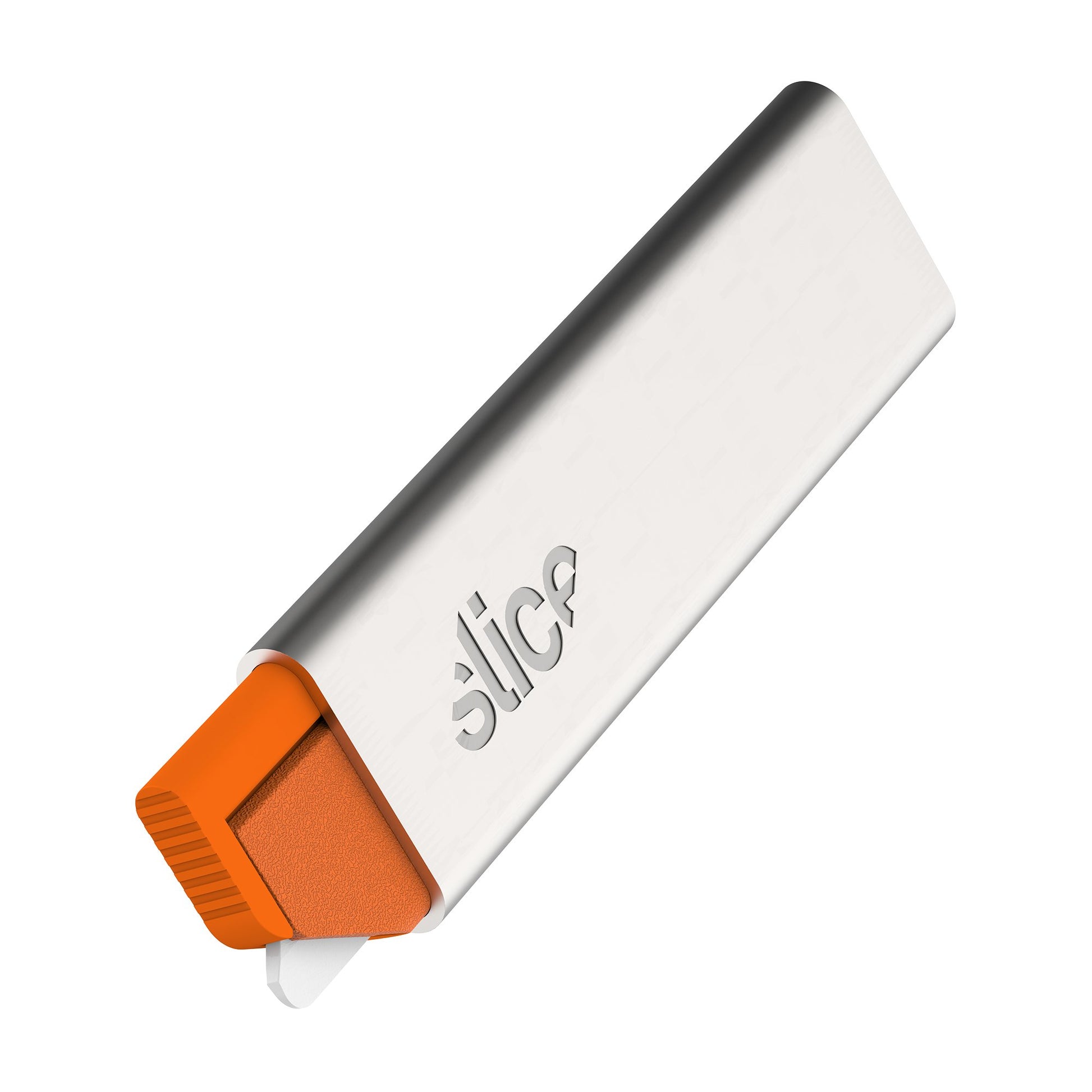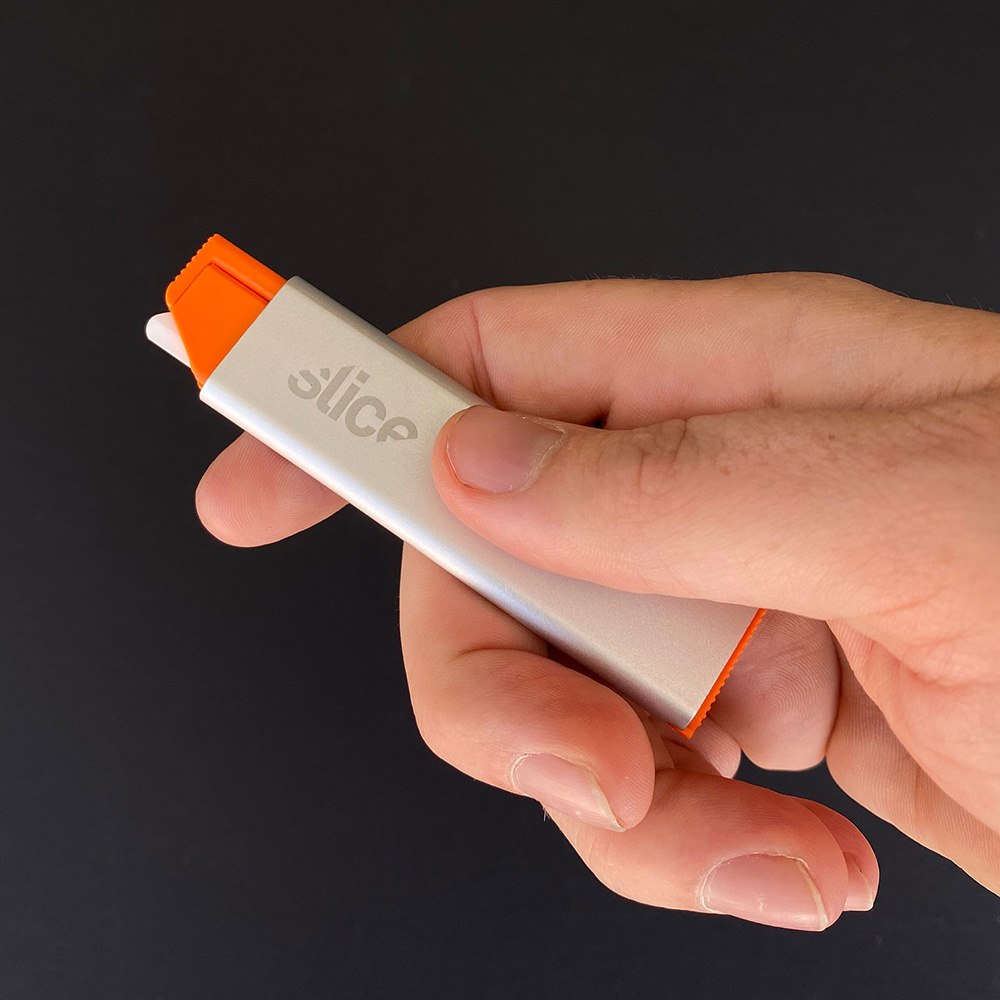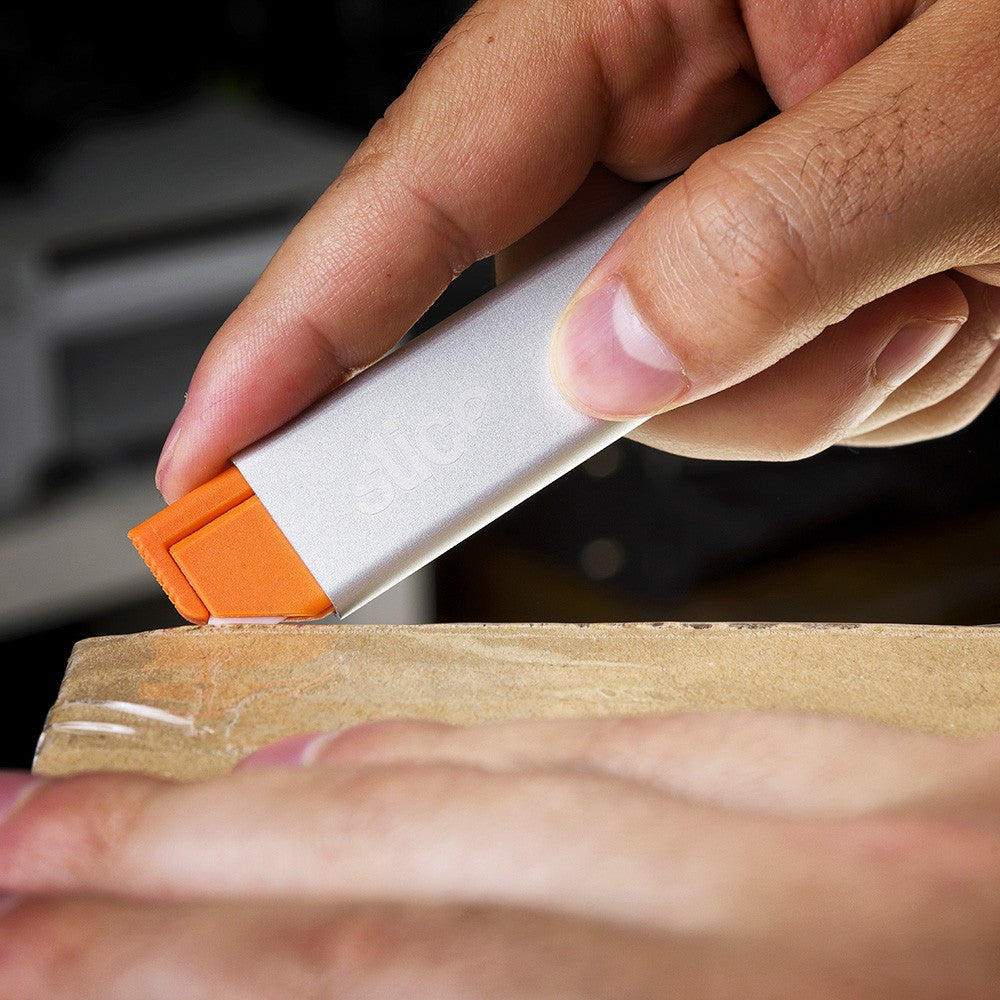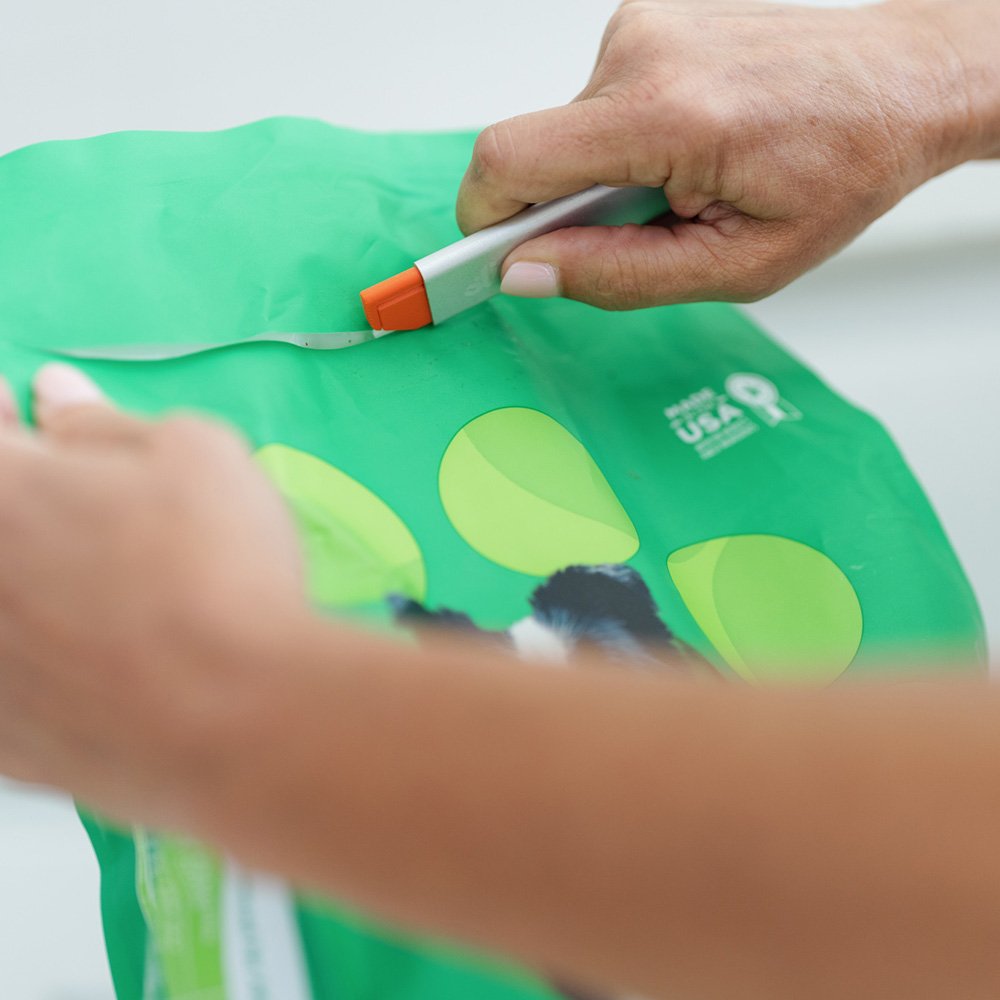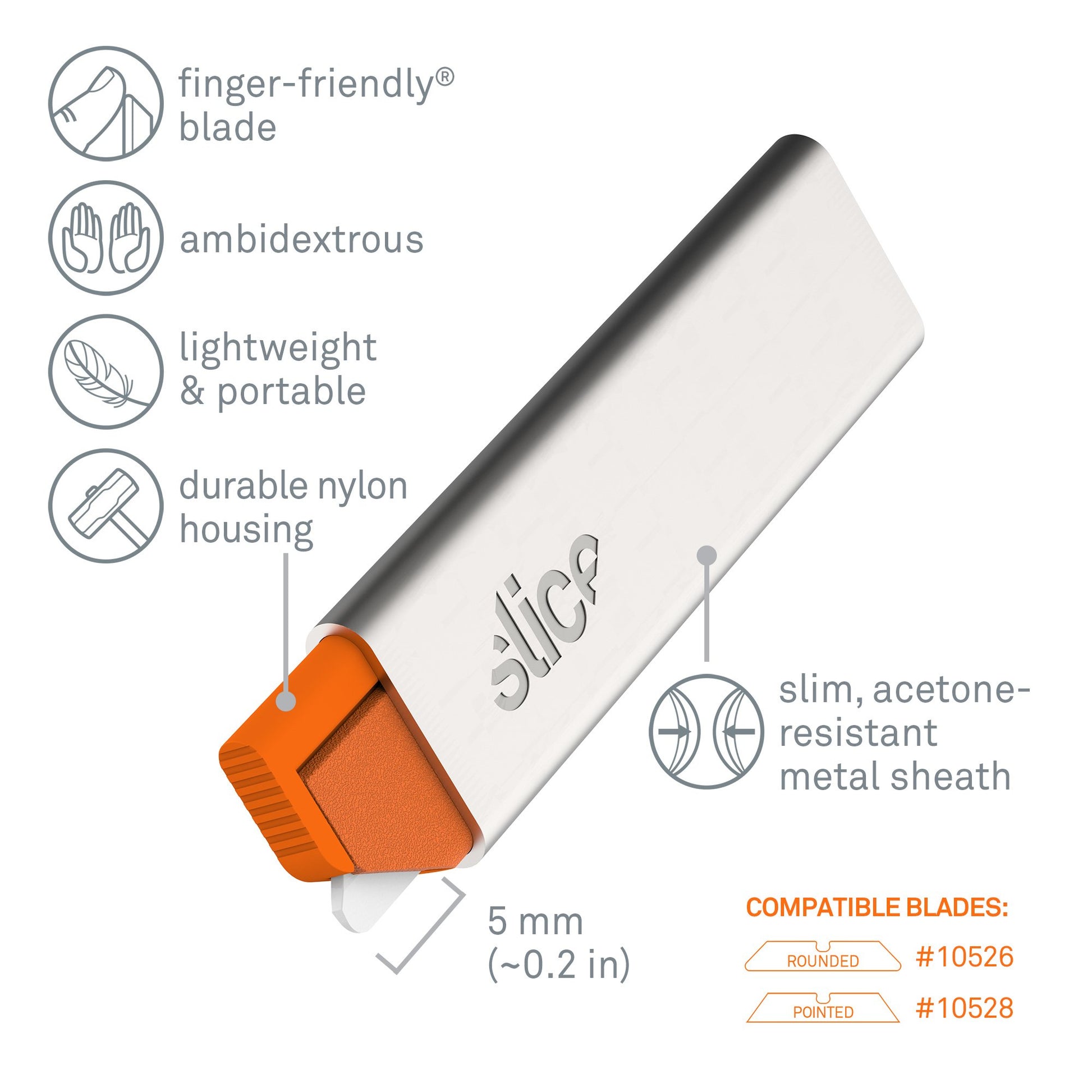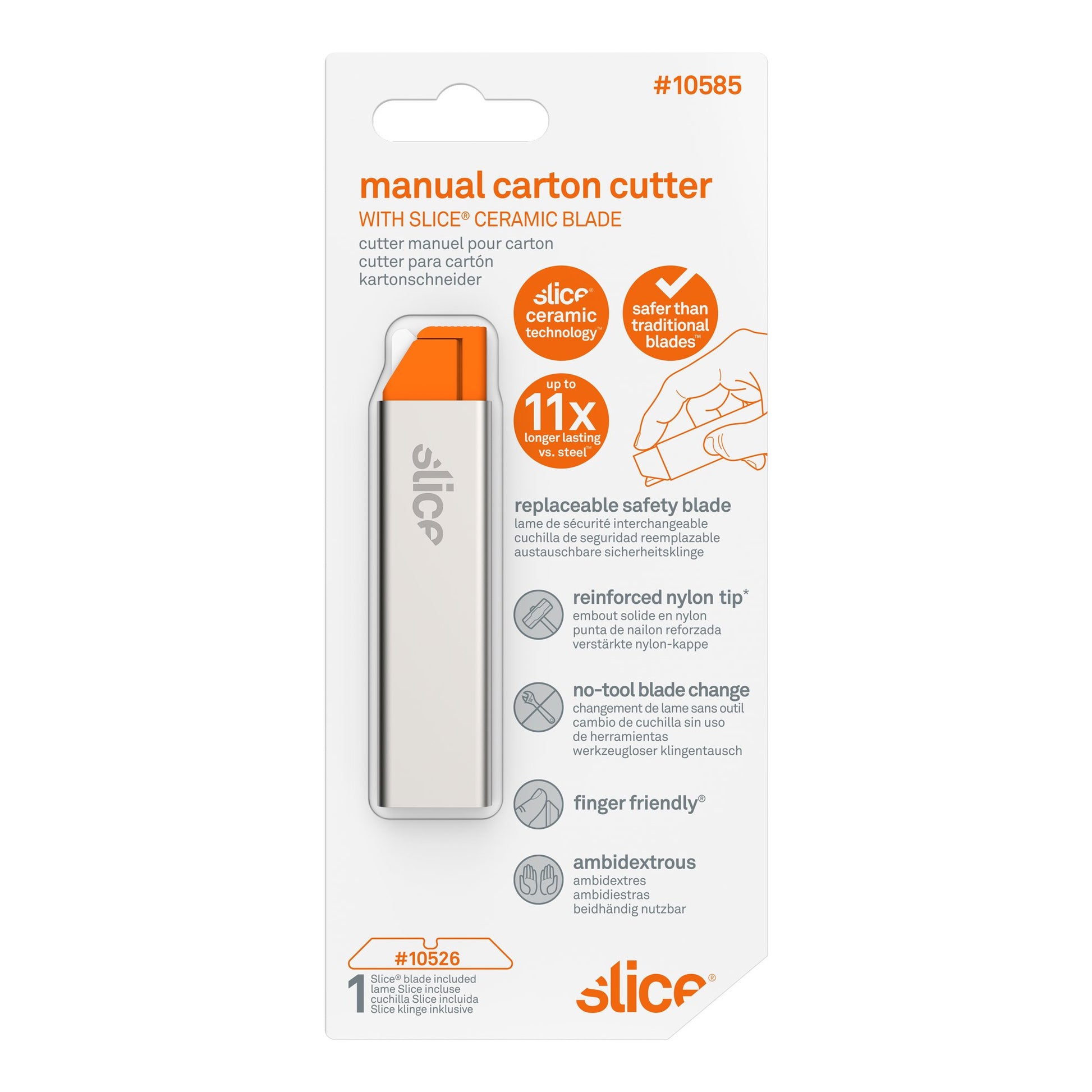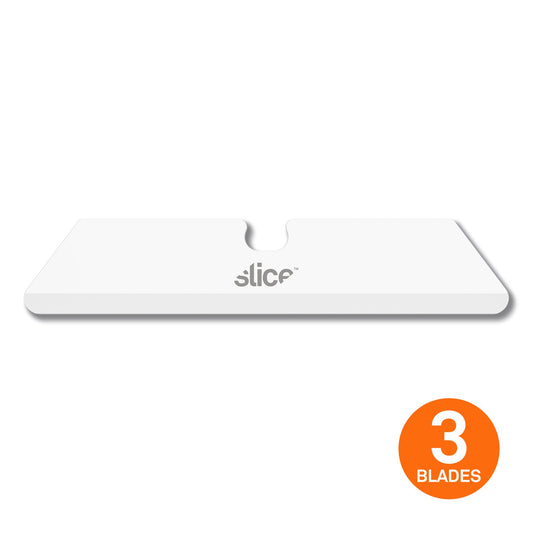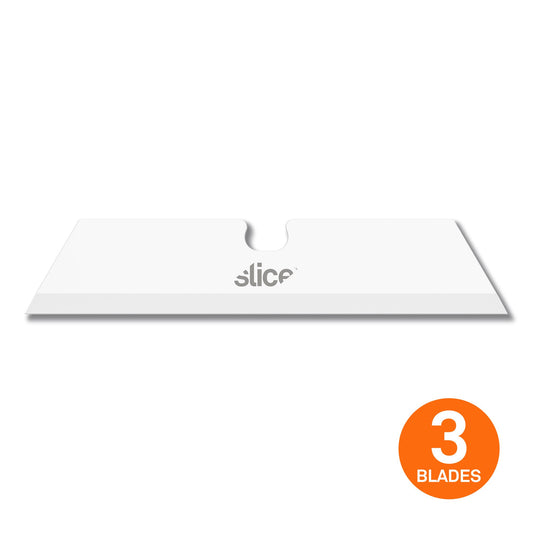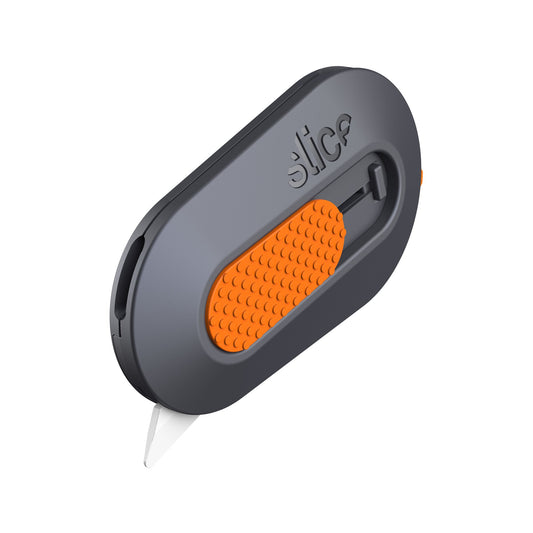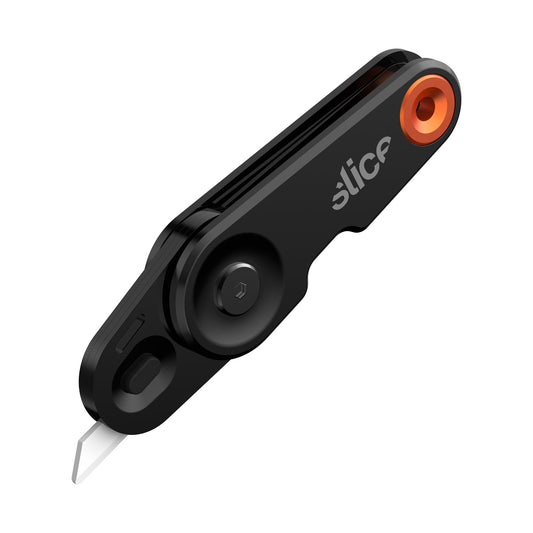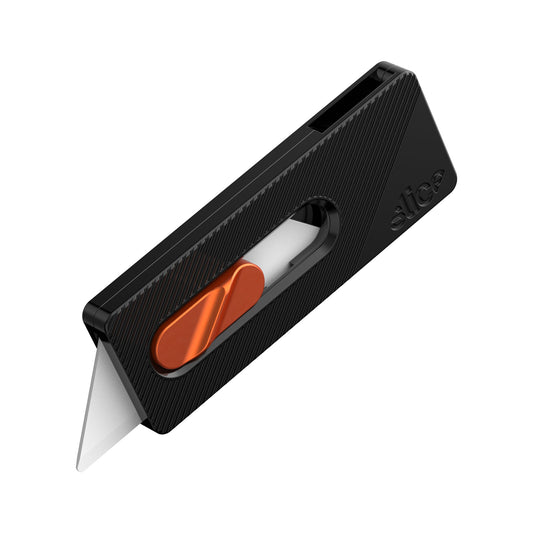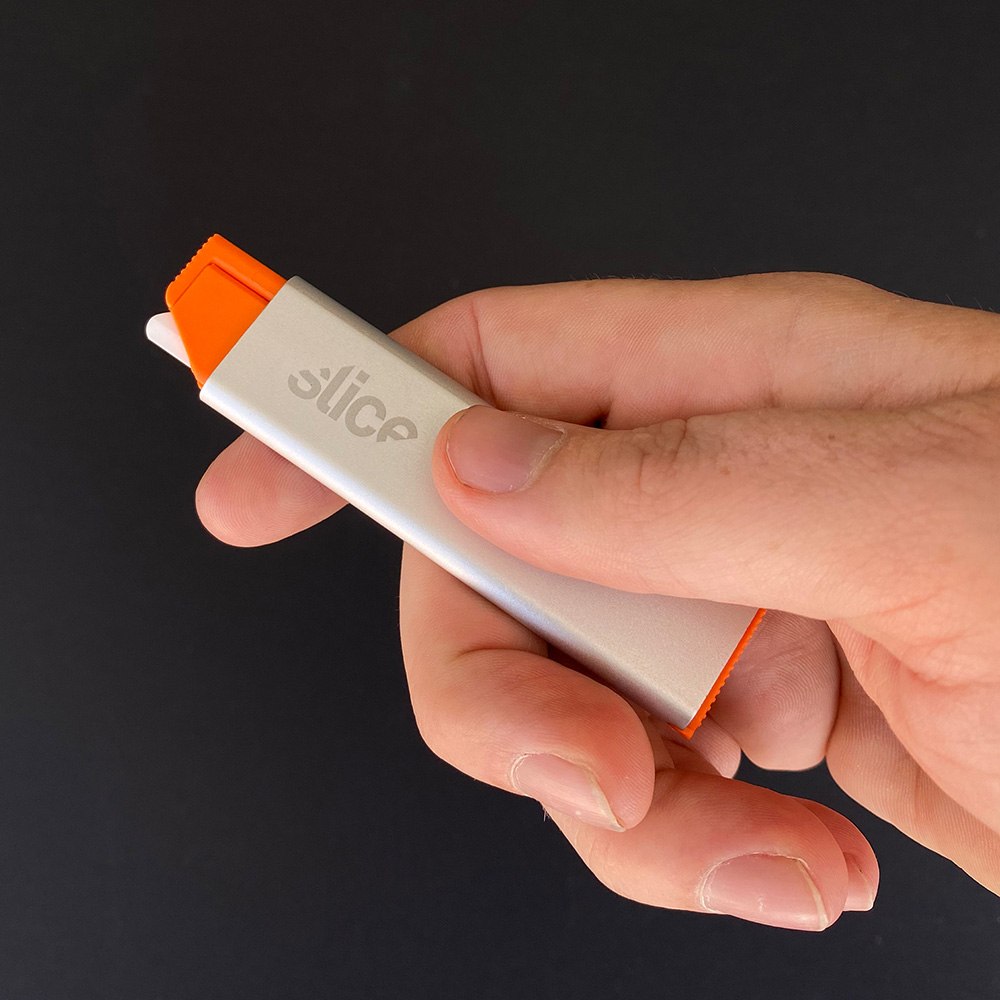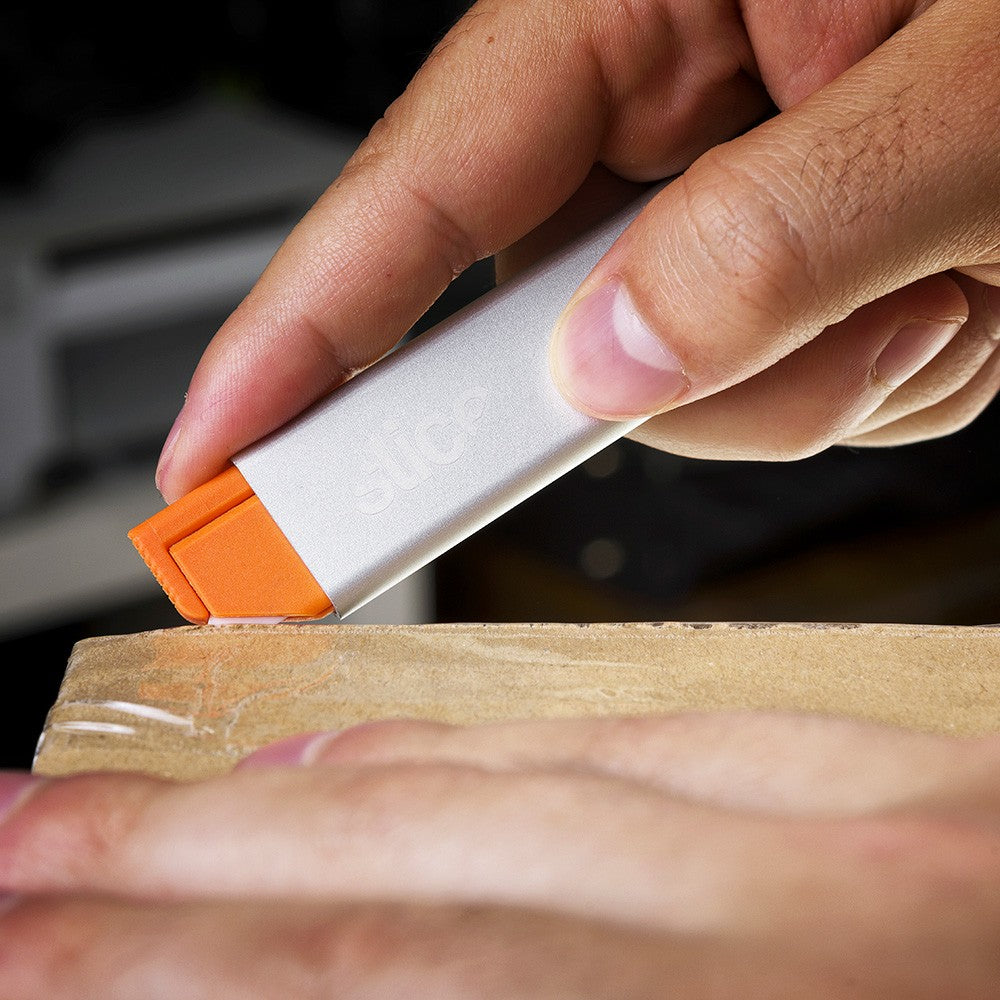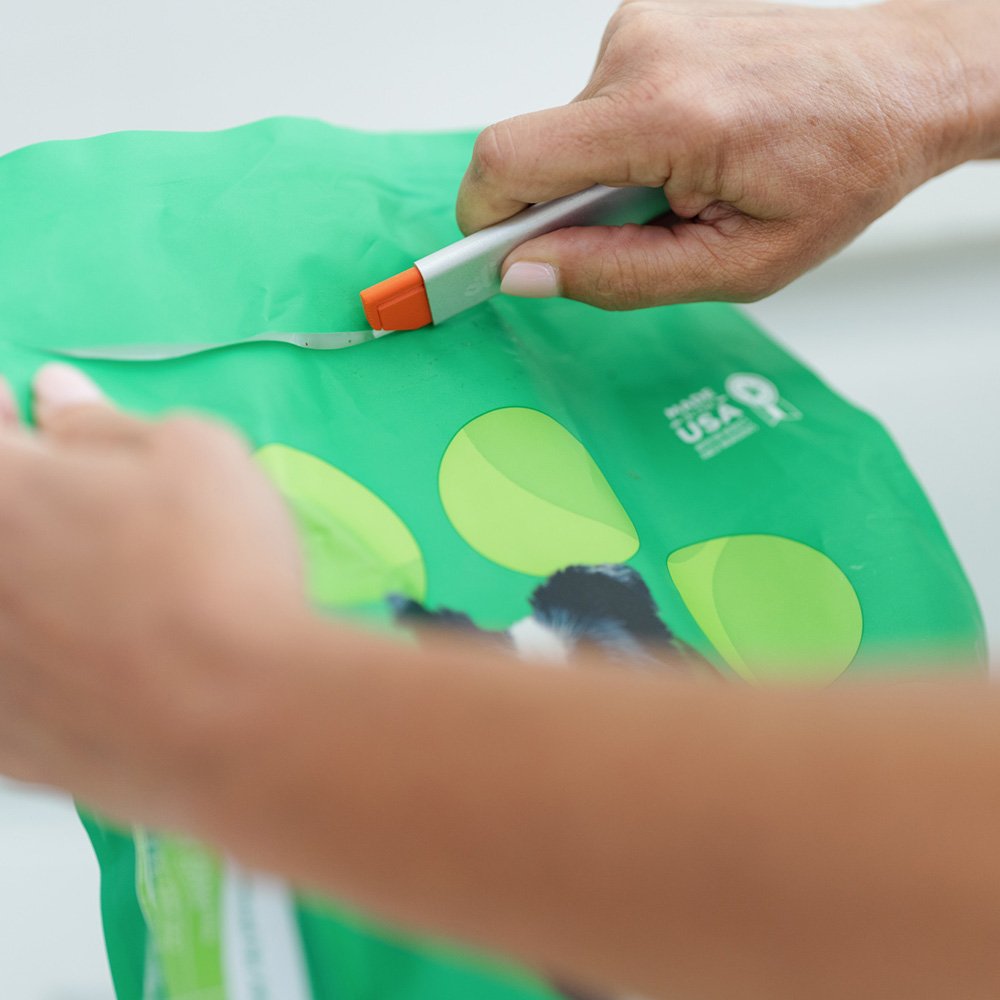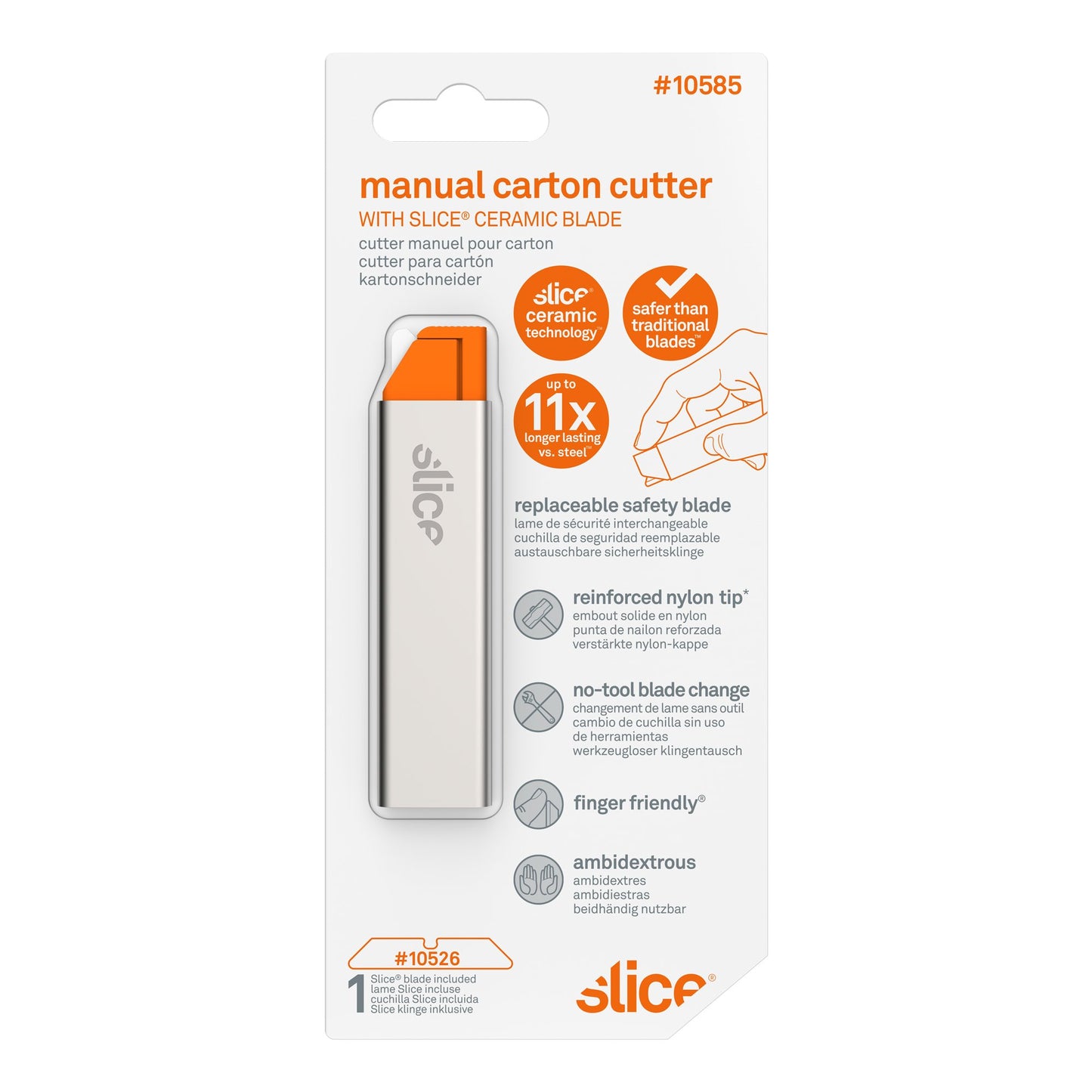Manual Carton Cutter
SKU #10585
Couldn't load pickup availability
The Slice® Manual Carton Cutter allows you to easily cut cardboard while staying safe. This compact tool is light and portable and fits comfortably in your left or right hand. The unique finger-friendly® blade is exposed just enough so you can cut carton with confidence, and the tool’s protective metal sheath covers the blade when not in use. Slice remains the first choice for safety and effectiveness in industrial settings and is now recognized as the leading box-opening tool in homes. From daily use in shipping warehouses to opening online orders at your doorstep, the Manual Carton Cutter makes common cutting tasks safer and easier.
- Finger-friendly® blade is the only safety blade on the market
- Light, portable, and fits comfortably in your hand
- Minimum blade exposure to guarantee effectiveness and maximize safety
- Sliding metal sheath covers blade when not in use
- Suitable for left- and right-handed users
- Slice® blades last 11.2x longer than traditional blades
Great for:
- Opening boxes, packaging, and shrink wrap
- Slicing cardstock
- Removing coupons from cereal boxes
Product Specifications
Product Specifications
Cutting Depth:
Material: GFN, aluminum, zirconium oxide
Dimensions: L x W x H
Weight: 0.07 lbWhat Customers Are Saying
-
 I buy these knives for my inspection crew at work. Very durable and cut through cardboard easily. I liked them so much I bought a few for home as well.
I buy these knives for my inspection crew at work. Very durable and cut through cardboard easily. I liked them so much I bought a few for home as well.
Charles Wiggins
-
 This thing is a blast. It’s one of those things that feels good when you use it. It glides through the tape on my packages. I love that sensation. I also use it on my small envelopes, vitamin difficult bottles and large envelope packages.
This thing is a blast. It’s one of those things that feels good when you use it. It glides through the tape on my packages. I love that sensation. I also use it on my small envelopes, vitamin difficult bottles and large envelope packages.
Joan
-
 I love this. It’s small & so easy to use. I can’t believe how well it cuts open packages yet it doesn’t feel sharp to the touch. It’s awesome! I bought several & they make great stocking stuffers.
I love this. It’s small & so easy to use. I can’t believe how well it cuts open packages yet it doesn’t feel sharp to the touch. It’s awesome! I bought several & they make great stocking stuffers.
Sue Messing
Videos
-
Replacing Carton Cutter Blades
Compatible Products
-
Utility Knife Blades (Rounded Tip)
Regular price $25.49 USDRegular priceUnit price per -
Utility Knife Blades (Pointed Tip)
Regular price $25.49 USDRegular priceUnit price per
Related Products
-
Manual Mini Cutter
Regular price $12.99 USDRegular priceUnit price per -
Safety Cutter
Regular price $7.99 USDRegular priceUnit price per -
EDC Folding Knife
Regular price $37.99 USDRegular priceUnit price per -
EDC Pocket Knife
Regular price $31.99 USDRegular priceUnit price per
FAQ
What Is a Carton Cutter?
>While many people use utility knives for this purpose and handle designs vary, carton knives typically have a thin, flat rectangular handle with a sheath that slides over the housing to expose or protect the blade. Many use standard metal utility blades while others use (dangerous) snap-off metal blades.These tools are frequently smaller than standard utility cutters and fit easily in the palm of your hand.
How Are Slice Carton Cutters Safer?
How Do I Change the Blade in the Slice Carton Cutter?
Ensure that the new blade lines up with the notch in the housing and close the housing. Before you slide the metal sheath back on, check for the notch on the bottom of the sheath. Line up the blade with this notch and slide the housing back in. This will ensure that the stopper on the housing lines up with the notch on the sheath, limiting how far down the sheath can slide.

